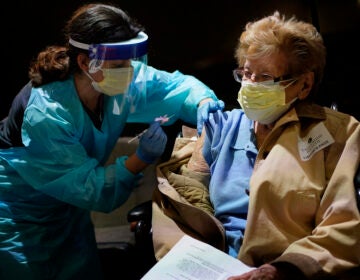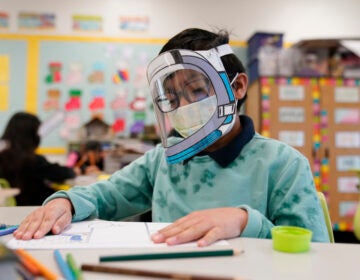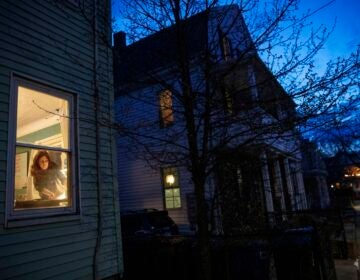CVS, Rite-Aid expand free drive-through COVID-19 testing in Pennsylvania
Testing more people is important, but a negative result does not necessarily mean someone is in the clear.
Listen 1:46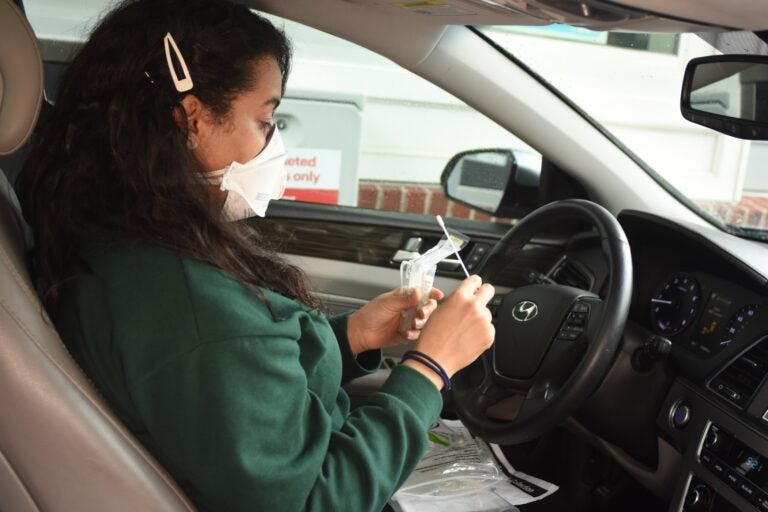
A driver opens a self-testing kit at a CVS drive-through. (Provided by CVS Health)
A major part of tracking and controlling the COVID-19 pandemic involves testing more people. CVS has added more free COVID test sites in Pennsylvania. Rite Aid also expanded testing as well, covering parts of Pennsylvania, New Jersey and Delaware.
CVS and Rite Aid both say that their tests will not involve any physical contact, but there will be pharmacists observing the swabbing to make sure it’s done properly. People have to register online before showing up, and stay in their cars the whole time. Anyone getting tested must be in a car.
But while a positive test means someone has COVID-19, a negative test may not mean someone is cleared, said Ron Collman, a virologist and professor of medicine at the University of Pennsylvania.
“Even the best tests that are performed in hospitals and laboratories may have as much as 30% or more false negative results,” Collman said. “It’s an area that’s evolving. Testing is really important; positive tests are really meaningful, and we have to keep in mind that it is possible that some proportion of infected individuals will be missed by the tests.”
He added that doctors, including himself and his colleagues, have seen patients that they suspect have COVID-19, test negative, but test positive again a second time.
He said there are two reasons that could happen: it could be something to do with the test itself, or more commonly, it’s that how much of the virus is in a patient’s nose or throat can vary over time. Some COVID tests involve swabbing the back of the nose, some involve swabbing the throat, and others involve swabbing both places and combining samples.
A recent journal article in the Annals of Internal Medicine documented how the chance of getting a false negative test result goes down in the first few days after being exposed to the virus, but goes back up again a few days after patients typically start showing symptoms. The researchers recommend doctors wait one to three days after a patient starts showing symptoms before testing, to make a false negative result less likely. They also say not to rule out an infection just based on a test result if doctors are suspicious.
There may be yet more tests available in the future. The Food and Drug Administration gave emergency use authorization to a COVID-19 test from a lab at Rutgers University that allows people to collect their own spit and send it to a lab for analysis. Preliminary research from Yale University that has yet to be peer-reviewed found that a saliva test might provide more consistent results than swabbing the back of the nose or throat. Collman said his research group at the University of Pennsylvania is also working on a saliva test to compare how that does compared to swabbing the nose and throat.

WHYY is one of over 20 news organizations producing Broke in Philly, a collaborative reporting project on solutions to poverty and the city’s push towards economic justice. Follow us at @BrokeInPhilly.
WHYY is your source for fact-based, in-depth journalism and information. As a nonprofit organization, we rely on financial support from readers like you. Please give today.



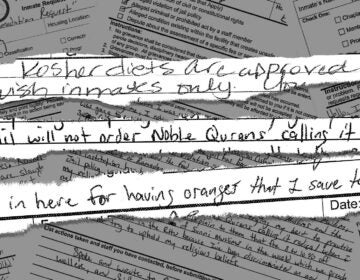
![CoronavirusPandemic_1024x512[1]](https://whyy.org/wp-content/uploads/2020/03/CoronavirusPandemic_1024x5121-300x150.jpg)
